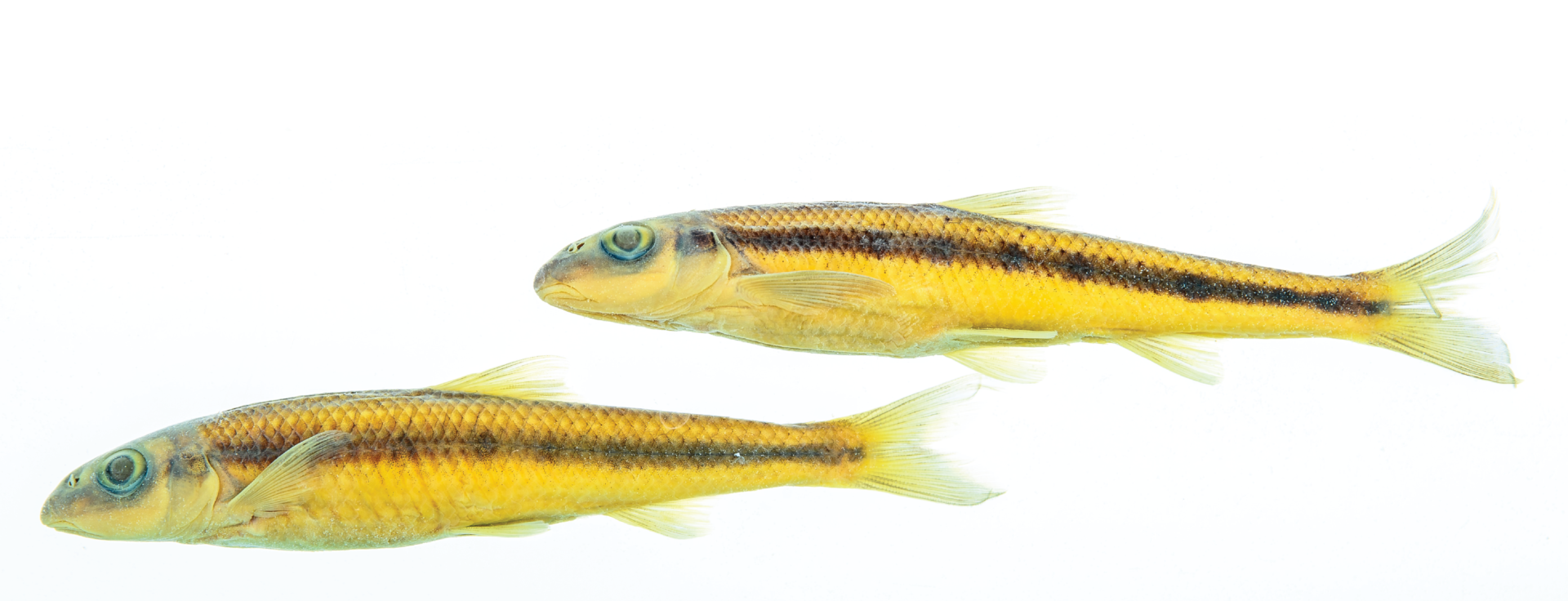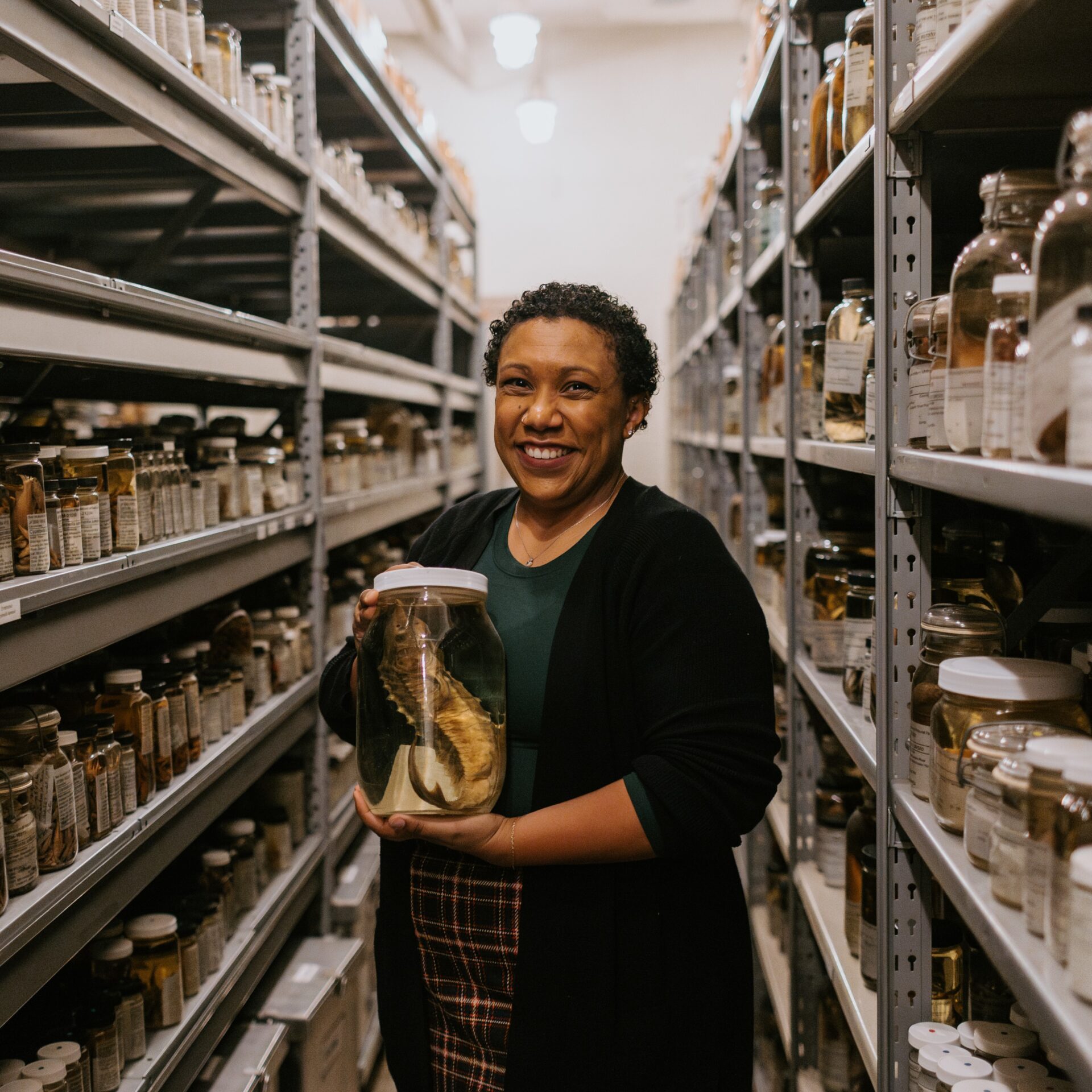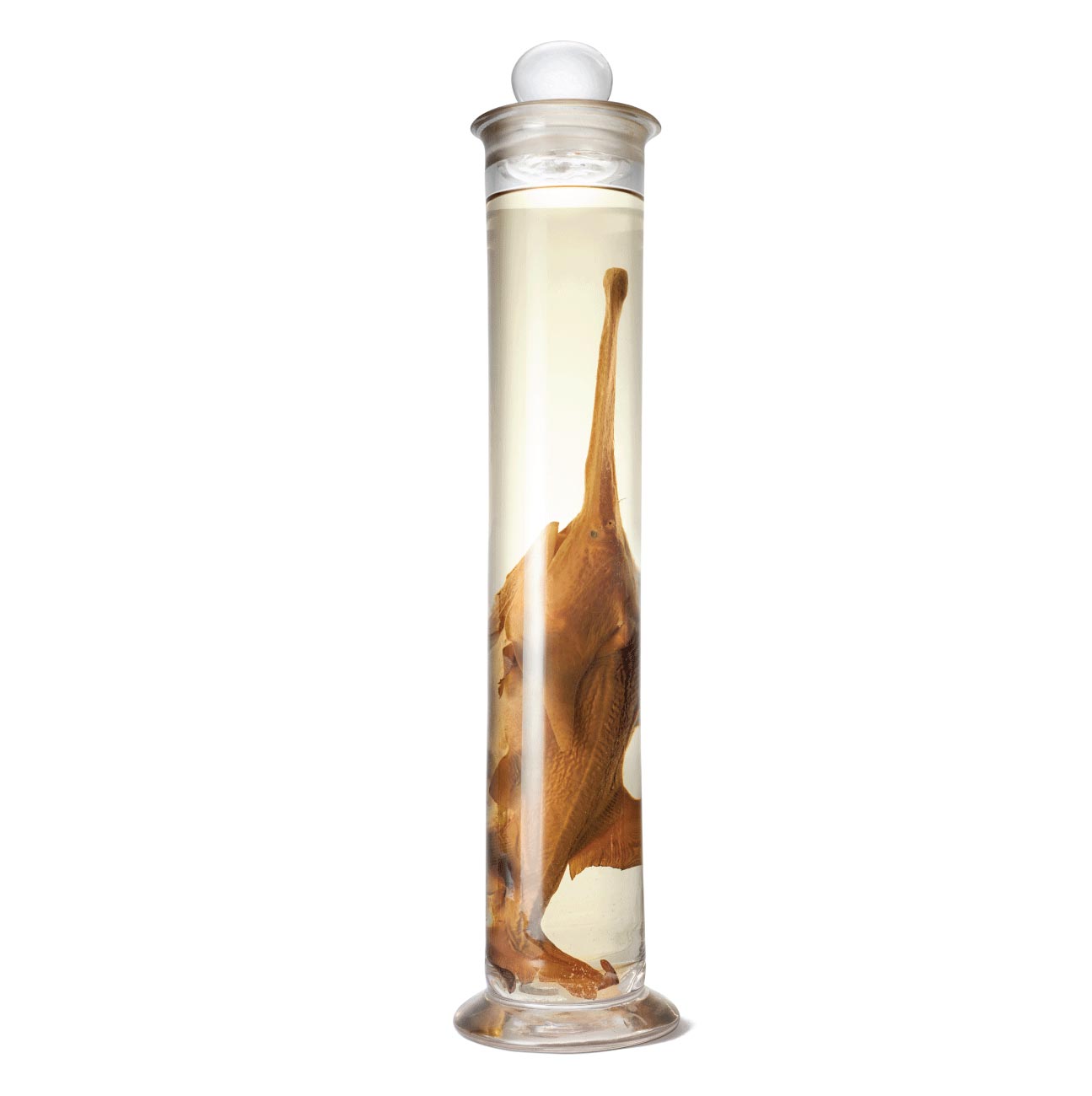
Fishes
More than 41,000 lots of specimens
Ichthyology is the study of fish, including bony fish, cartilaginous fish, and jawless fish.
The fish collection at the Bell Museum of Natural History dates to the 19th century and contains over 41,000 cataloged lots. Early collections focused on fishes of the upper Midwest, especially fishes of Minnesota. However, there are many older collections from outside the state. These include specimens from the Menage expedition to the Phillipines in the 1890s; fish from Hawaii collected in the early 1900s; and many other specimens from across the continental United States.
The fish collection also holds diverse holdings of marine fishes from the Pacific Northwest, Gulf of Mexico, and Atlantic coast. While most of the specimens are stored in alcohol there is: a large collection of pharyngeal teeth from cyprinids and catostomids; a sizable, uncataloged larval fish collection; and a growing collection of dry and stained-and-cleared skeletal material.
Minnesota Biodiversity Atlas
The Minnesota Biodiversity Atlas is a searchable, public map showing where Bell Museum animal, plant, and fungal specimens have been found and collected. The Atlas focuses on Minnesota, the meeting place of three of the world’s largest terrestrial ecosystems: eastern broadleaf forests, tallgrass prairies, and coniferous forests. It also represents moments in history before key changes occurred to the landscape, environment, and climate.
What’s most exciting, scientists will use the data in the Atlas to forecast where ecosystems and their associated species may be found in the future.




